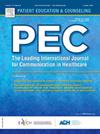Approaches to self-management integration and influencing factors in everyday life after spinal cord injury: A qualitative narrative analysis
IF 2.9
2区 医学
Q2 PUBLIC, ENVIRONMENTAL & OCCUPATIONAL HEALTH
引用次数: 0
Abstract
Objective
This study explores how individuals with spinal cord injury (SCI) integrate self-management (SM) into their everyday lives post-discharge from initial rehabilitation. It focuses on identifying the approaches they employ in balancing health tasks with personal and societal roles and the influencing factors.
Methods
We conducted semi-structured interviews with 32 participants, recruited from four rehabilitation centers across Switzerland, three months post-rehabilitation. Data collection spanned from November 2022 to May 2024. We used thematic analysis to identify the challenges and strategies associated with SM integration.
Results
Three factors were found to influence SM integration: mind and body dynamics, encompassing physical and emotional aspects; environmental and informational dynamics, including external support, accessible facilities, and availability of information; and society and perception dynamics, including social stigma and misconceptions. These factors shaped the different approaches individuals adopted to integrate SM: The compartmentalizing approach, where individuals focused on one aspect at a time; The mixing approach, where both health and other tasks were prioritized but adjusted; and The embedding approach, where there was equal prioritization with no adjustment on either side.
Conclusions
This study contributes to a more nuanced understanding of how to balance both medical and role management in SCI post-discharge. Self-management integration is achieved through different approaches and influenced by a wide range of factors, internal and external ones. Further research should longitudinally explore whether the approach one individual employs changes with the time and what aspects reinforce one or the other.
Practical implications
Our findings highlight the need for flexible, personalized SM interventions that are contextually grounded but also adaptive and resilient. Rehabilitation settings should assess different SM integration approaches, using feedback to guide individuals in refining their strategies. Communication guidelines and tailored education sessions are recommended to help align SM practices with patients' evolving goals, including family, social, and leisure priorities.
脊髓损伤后日常生活自我管理整合及影响因素的定性叙事分析
目的探讨脊髓损伤(SCI)患者在康复后如何将自我管理(SM)融入日常生活。它的重点是确定他们在平衡保健任务与个人和社会角色以及影响因素方面所采用的方法。方法采用半结构化访谈法,对32名康复后3个月从瑞士4个康复中心招募的参与者进行访谈。数据收集时间为2022年11月至2024年5月。我们使用主题分析来确定与SM整合相关的挑战和策略。结果发现影响SM整合的三个因素:身心动力,包括身体和情感方面;环境和信息动态,包括外部支持、无障碍设施和信息的可用性;以及社会和感知动态,包括社会耻辱和误解。这些因素形成了个体在整合SM时采用的不同方法:划分方法,即个体一次只关注一个方面;混合方法,即卫生和其他任务都是优先考虑的,但会进行调整;以及嵌入方法,在这种方法中,双方都有同等的优先级,没有任何调整。结论本研究有助于更细致地了解如何平衡脊髓损伤出院后的医疗和角色管理。自我管理整合是通过不同的途径实现的,并受到内部和外部因素的广泛影响。进一步的研究应该纵向探索一个人采用的方法是否随着时间的推移而变化,以及哪些方面加强了其中一个或另一个。我们的研究结果强调了灵活、个性化的SM干预措施的必要性,这些干预措施既要基于情境,又要具有适应性和弹性。康复机构应评估不同的SM整合方法,使用反馈来指导个体改进策略。建议制定沟通指南和量身定制的教育课程,以帮助SM实践与患者不断发展的目标保持一致,包括家庭、社会和休闲优先事项。
本文章由计算机程序翻译,如有差异,请以英文原文为准。
求助全文
约1分钟内获得全文
求助全文
来源期刊

Patient Education and Counseling
医学-公共卫生、环境卫生与职业卫生
CiteScore
5.60
自引率
11.40%
发文量
384
审稿时长
46 days
期刊介绍:
Patient Education and Counseling is an interdisciplinary, international journal for patient education and health promotion researchers, managers and clinicians. The journal seeks to explore and elucidate the educational, counseling and communication models in health care. Its aim is to provide a forum for fundamental as well as applied research, and to promote the study of organizational issues involved with the delivery of patient education, counseling, health promotion services and training models in improving communication between providers and patients.
 求助内容:
求助内容: 应助结果提醒方式:
应助结果提醒方式:


